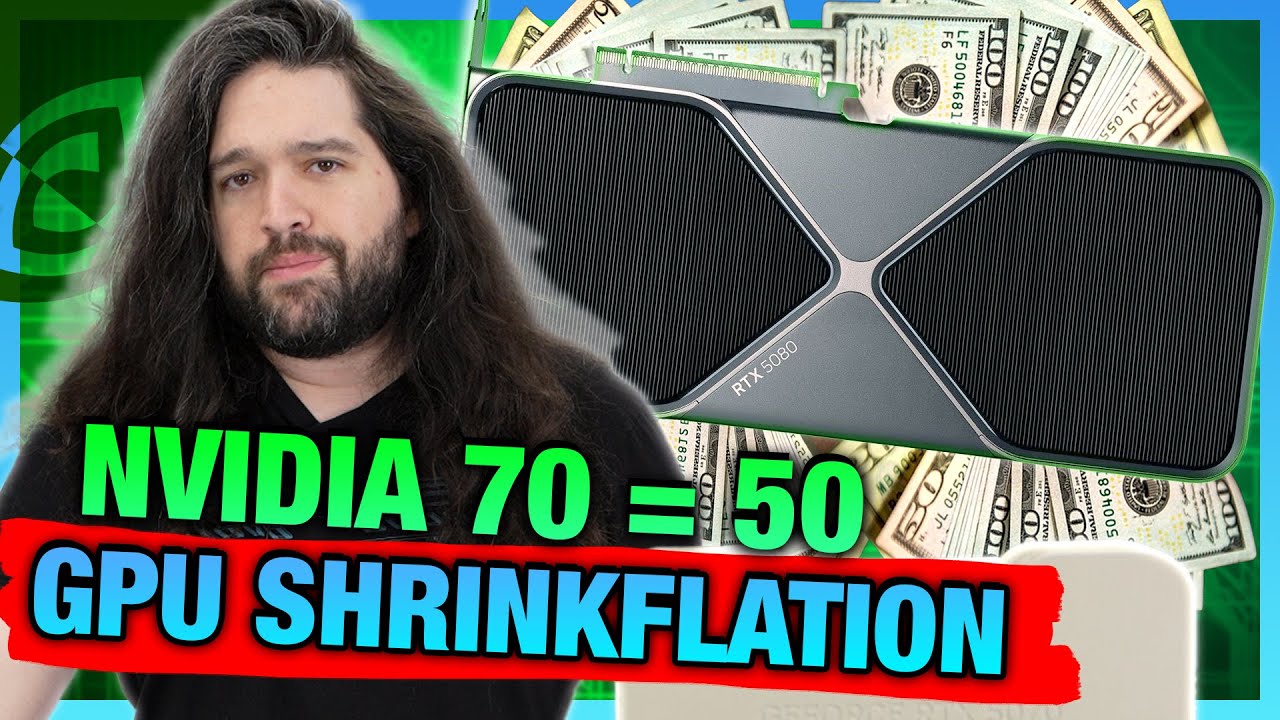The video discusses the trend of “shrinkflation” in NVIDIA’s GPU offerings, particularly with the RTX 50 series, where consumers are receiving fewer CUDA cores and diminished value for their money compared to previous generations. It highlights the systemic decline in performance relative to pricing, as NVIDIA shifts its focus toward a broader audience, leading to increased dissatisfaction among gamers.
The video discusses a concerning trend in NVIDIA’s GPU offerings, particularly focusing on the recent RTX 50 series. It highlights that consumers are getting fewer CUDA cores for their money than ever before, with the RTX 5070 being compared to the older GTX 950 in performance metrics. The video explores the phenomenon of “shrinkflation,” where the value received for the price paid has diminished, despite prices remaining relatively stable or even increasing when adjusted for inflation. The discussion revisits previous analyses of NVIDIA’s product lineup, particularly the RTX 480 problem, to illustrate how the situation has not improved.
The video presents a detailed analysis of the CUDA core configurations across different GPU generations, demonstrating a clear downward trend in the percentage of CUDA cores available in lower-tier models compared to flagship models. For instance, the RTX 5080 has only 49% of the CUDA cores of its flagship counterpart, the 5090, marking a significant decline from previous generations. The video emphasizes that this trend is not just an isolated incident but rather a systemic issue across NVIDIA’s product line, where lower-tier cards now offer less value compared to their predecessors.
In addition to the CUDA core analysis, the video examines the launch prices of GPUs over the years, adjusted for inflation. It notes that while flagship models have seen substantial price increases, the pricing of lower-tier models has remained relatively flat, resulting in consumers receiving less performance for similar or higher prices. The video highlights that the RTX 3080 was an exception to this trend, providing excellent value at launch, whereas the subsequent models have not followed suit, leading to consumer dissatisfaction.
The video also discusses the implications of NVIDIA’s marketing strategies and product segmentation. It argues that the company has shifted its focus towards catering to a broader audience, including professional creators, which has diluted the value proposition for gamers. This segmentation has resulted in higher prices and lower performance for gaming GPUs, as the company attempts to capitalize on various user groups with different needs. The video suggests that NVIDIA’s approach has led to a disconnect between consumer expectations and the actual product offerings.
Ultimately, the video aims to raise awareness among consumers about the diminishing value of NVIDIA GPUs and encourages them to reconsider their purchasing decisions. It stresses the importance of understanding the current landscape of GPU offerings, particularly for those accustomed to previous generations’ performance and pricing. The video concludes with a call to action for viewers to stay informed and critical of the evolving GPU market, especially as NVIDIA continues to dominate the industry.
